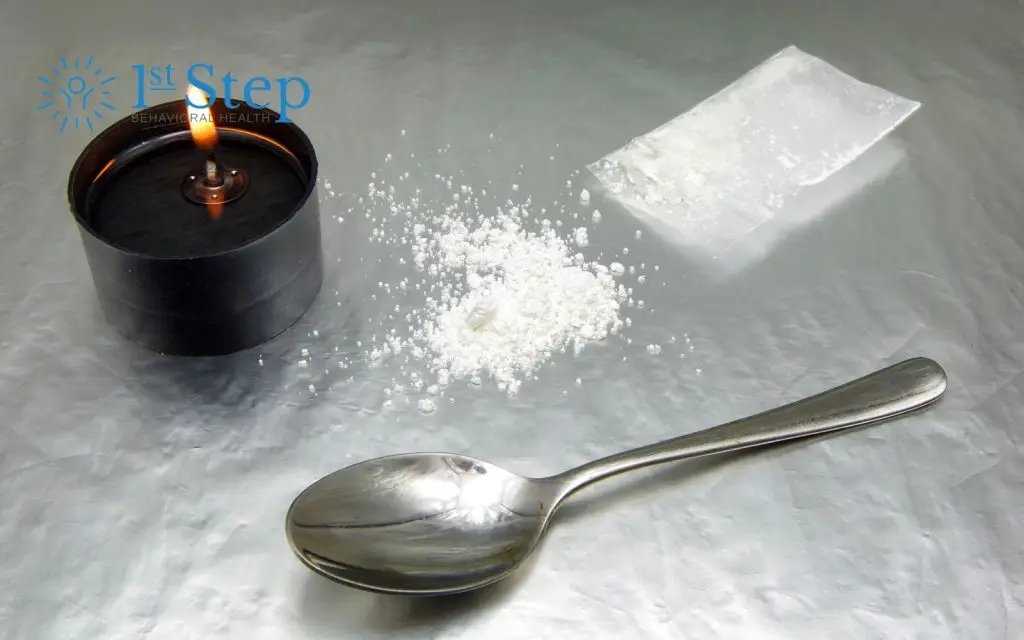In the evolving world of drug culture, new methods of substance abuse continue to emerge, each often more dangerous than the last. One such method that has gained attention is hot railing—a practice associated with methamphetamine use that poses significant health risks. If you or someone you love is battling meth addiction, understanding what hot railing is and why it’s so dangerous is crucial.
What is Hot Railing?
Hot railing is a method of consuming methamphetamine (commonly known as crystal meth) that involves heating a glass tube or pipe until it becomes red hot, then using it to vaporize powdered meth, which is then inhaled through the nose. This technique combines elements of both smoking meth and snorting meth, and it’s known for delivering an intense high almost instantly.
But what is hot railing, and how does it work?
Hot railing is a way of ingesting meth. First, a glass pipe or tube is heated until it’s glowing. Then, powdered meth is placed in a line on a flat surface. Next, one end of the hot glass is placed near the meth, while the other end is placed in the nostril. As the user inhales, the meth is vaporized by the heat and inhaled in vapor form.
This method has become more visible in online forums and drug subcultures, often praised for the rapid onset of effects. But those effects come at a steep cost.
Why Is Hot Railing So Dangerous?
The dangers of hot railing are both immediate and long-term, impacting both the body and mental health. The extreme heat involved and the instability of methamphetamine when vaporized make this method extremely dangerous.
Severe Burns and Tissue Damage
The use of a heated glass tube directly near the nostrils can cause severe burns to the nose, sinuses, and face. Even a brief mistake can result in extreme injury.
Toxic Fumes and Lung Irritation
When methamphetamine is vaporized at high temperatures, it can release toxic fumes. These fumes irritate the respiratory system, increasing the risk of lung infections and respiratory inflammation. Over time, this can cause chronic lung damage.
Increased Risk of Meth-Induced Psychosis
Because hot railing delivers a more potent and immediate dose, it elevates the chances of experiencing meth-induced psychosis, which includes hallucinations, paranoia, and aggressive behavior. This psychological impact can be deeply traumatic for both users and their loved ones.
Accelerated Addiction and Cravings
Meth is already a highly addictive drug that stimulates dopamine production at unsustainable levels. Hot railing intensifies this stimulation, leading to intense drug cravings and more severe addiction. Users may find themselves seeking more extreme methods to replicate the high, deepening the cycle of meth abuse.
Tooth Decay and “Meth Mouth”
Methamphetamine use is notoriously linked with tooth decay, known commonly as meth mouth. Hot railing dries out the oral and nasal tissues, contributing further to tooth and gum damage.
Statistics on Methamphetamine Use and Risks
According to the Substance Abuse and Mental Health Services Administration (SAMHSA), approximately 2.5 million people in the U.S. reported using methamphetamine in the past year (2022 data). Of those, an alarming 1.6 million people met the criteria for methamphetamine use disorder.
A study published by the National Library of Medicine notes that meth-induced psychosis affects up to 40% of chronic meth users, particularly those who use more extreme methods like hot railing.
Further, the Centers for Disease Control and Prevention (CDC) reported that meth-related overdose deaths increased by over 180% between 2015 and 2020, a statistic partially driven by new and dangerous consumption methods.
Why Do People Hot Rail Meth?
There’s no single answer, but several patterns emerge: First, users may hot rail meth if they are Seeking a more intense high. Traditional methods of consuming meth may no longer produce the same effect due to tolerance.Some users may hot rail meth out of curiosity and peer influence: Within certain circles of drug abuse, hot railing is considered a “step up” in experience.
Finally, people may use meth in this way as a result of misinformation: Some users mistakenly believe that hot railing is “safer” than injecting meth or smoking it, when in fact it carries its own serious risks.
Recognizing the Signs of Meth Abuse
Understanding the physical and behavioral signs of methamphetamine addiction is key to early intervention. These can include:
- Extreme fatigue followed by long periods of hyperactivity
- Severe weight loss
- Mood swings, anxiety disorders, and extreme paranoia
- Meth mouth (tooth decay and dry mouth)
- Obsessive behaviors
- Withdrawal symptoms, including intense cravings, depression, and agitation
If you notice these signs in someone you love, or if you’re experiencing them yourself, it may be time to seek professional help.
Treatment Options for Meth Addiction
Breaking free from methamphetamine use, especially when it involves hot railing, requires a structured, supportive environment. Here are some of the key components of comprehensive meth addiction treatment.
Detox and Withdrawal Support
Withdrawal from meth can be intense, with symptoms like depression, hallucinations, and violent mood swings. Medical supervision can provide safety and comfort during detox.
Residential Treatment
Inpatient or residential treatment allows patients to receive round-the-clock support. These programs focus on stabilizing health, addressing trauma, and rebuilding life skills.
Outpatient Treatment
Outpatient treatment is suitable for those with supportive home environments. This model includes counseling, group therapy, and mental health support.
Behavioral Therapy
Cognitive Behavioral Therapy (CBT) and Contingency Management (CM) have shown effectiveness in treating methamphetamine addiction. They help individuals understand the underlying triggers for use and develop coping strategies.
Aftercare and Harm Reduction
For those not ready for full abstinence, harm reduction strategies—including safer consumption methods and education—can minimize damage while building trust and long-term support.
When to Seek Professional Help
If you or someone close to you is experimenting with hot railing meth, it’s a red flag. This is not a “just once” or “casual” method of use. It’s often a sign of severe addiction and desperation.
Don’t wait for the health risks—like severe burns, respiratory infections, or meth-induced psychosis—to take their toll. Seeking professional addiction treatment is not just a safer choice. It’s a life-saving one.
Final Thoughts
Hot railing is more than just another way to get high—it’s a dangerous method of meth abuse that puts users at risk of irreversible harm. From extreme physical injuries to deepening psychological trauma, the costs are staggering.
Understanding this method and its dangers is a step toward greater awareness, compassion, and prevention. If you or someone you love is affected by methamphetamine use, resources are available, and recovery is possible.
No one chooses addiction, but everyone deserves a chance to overcome it. If you or someone you love struggles with meth abuse or other forms of addiction, you are not alone. Find evidence-based treatment programs and compassionate support at First Step Behavioral Health. Learn about our programs or schedule an intake appointment by contacting us today.
Frequently Asked Questions
1. Is hot railing exclusive to methamphetamine use?
While hot railing is most commonly associated with methamphetamine, particularly in its powdered form, it has been attempted with other substances. However, meth is the drug most often used this way due to its volatility and ease of vaporization. Using any drug via hot railing is extremely dangerous and not a safe method of consumption for any substance.
2. Why do some users prefer hot railing over smoking or injecting meth?
Some users perceive hot railing as a “middle ground”—more intense than smoking, but less invasive than injecting. It also delivers a fast onset of effects without the use of needles, which can carry stigma or health risks like HIV or hepatitis. However, this perception is misleading, as hot railing carries its own unique and severe dangers.
3. Can hot railing meth cause permanent damage to the nasal passages?
Yes. The intense heat from a red-hot glass pipe, combined with the chemical irritation from vaporized meth, can cause permanent damage to the nasal lining, septum, and even the sinus cavity. Repeated use can lead to chronic nosebleeds, infections, and in severe cases, perforated nasal septums.
4. Is hot railing detectable in standard drug tests?
Yes. Regardless of how meth is consumed—snorted, smoked, injected, or hot railed—it still enters the bloodstream and can be detected by standard drug testing methods. Urine tests, hair follicle tests, and blood tests can all detect methamphetamine metabolites.
5. Are there any safer alternatives to hot railing for those not ready to quit?
While no method of methamphetamine use is safe, harm reduction programs may offer education, clean equipment, and non-judgmental support to minimize risks. These programs aim to keep users alive and healthy long enough to consider treatment. Seeking help from harm reduction clinics or community outreach organizations can be a first step toward change.
6. How can I talk to a loved one who is hot railing meth without pushing them away?
Start by listening without judgment and expressing concern from a place of care rather than control. Avoid scare tactics or ultimatums. Use “I” statements (e.g., “I’m worried about your health”) and offer to help them explore professional addiction treatment or talk to a healthcare provider. Patience and consistency are key.
Sources:
Jump to a Section
Call (855) 425-4846
